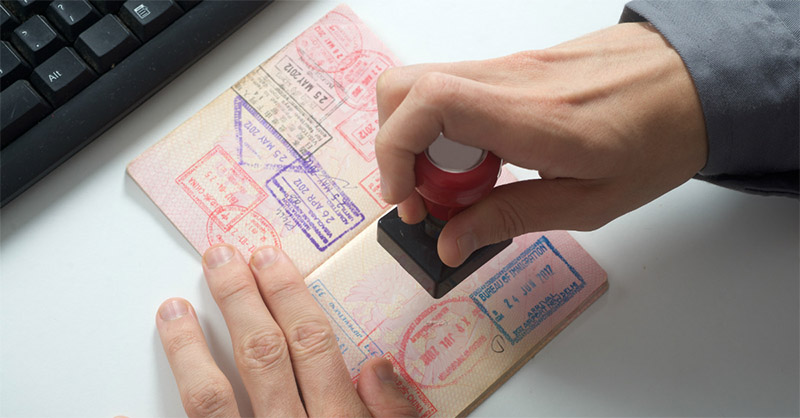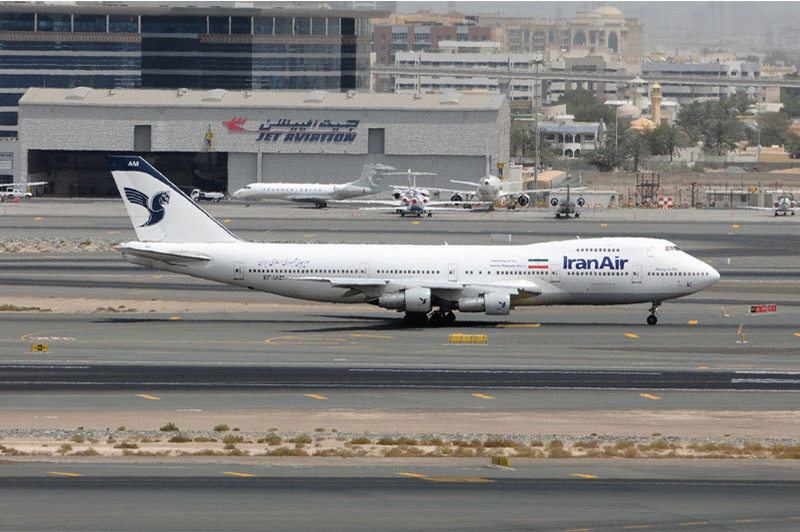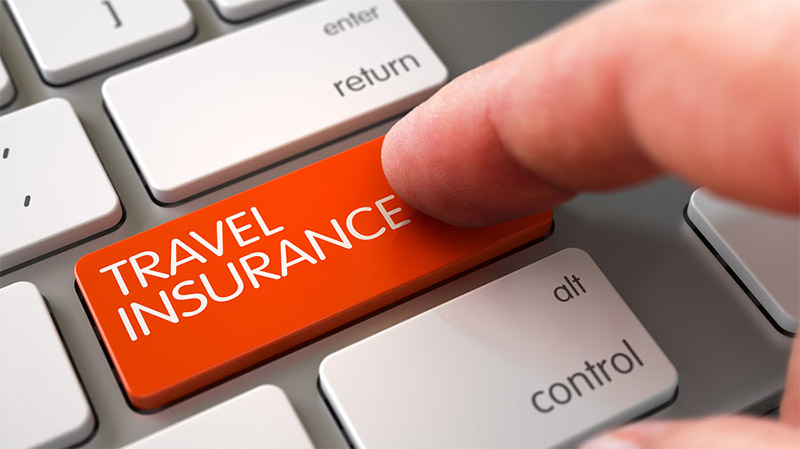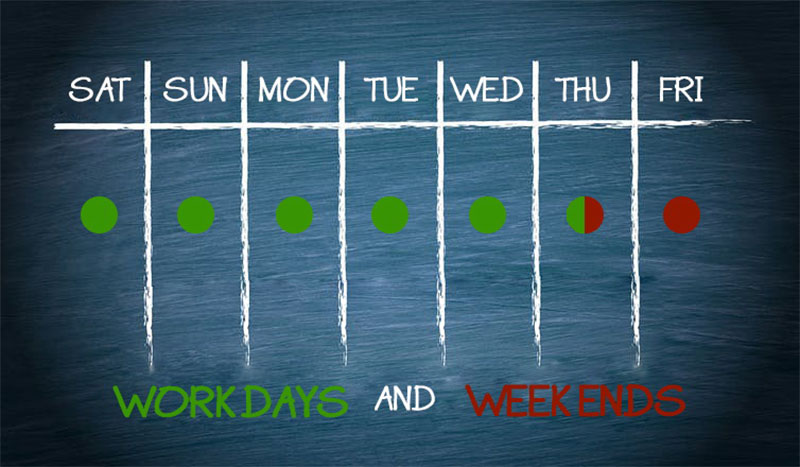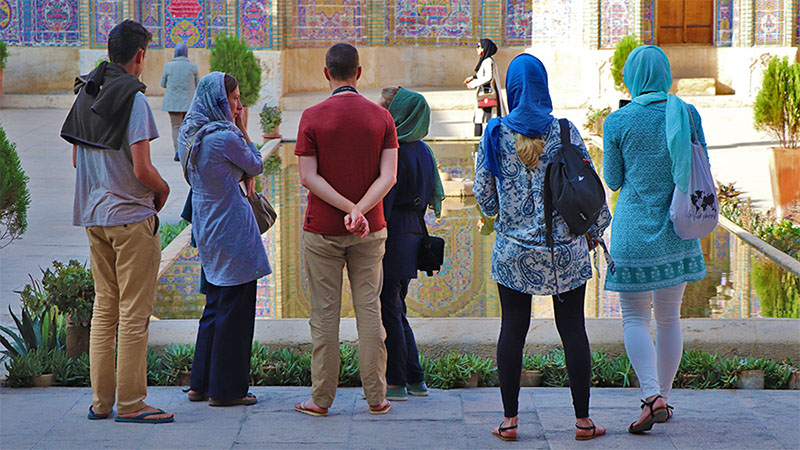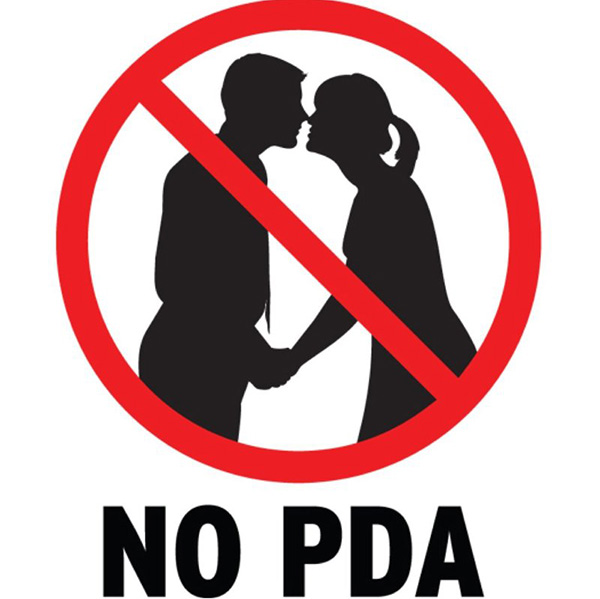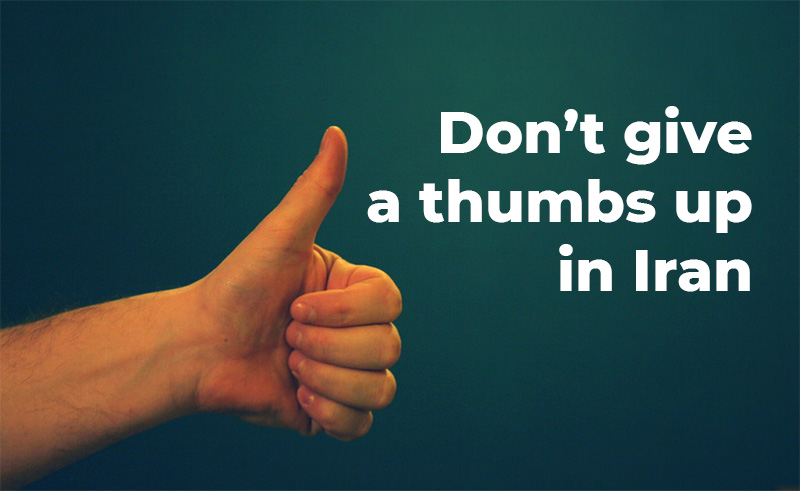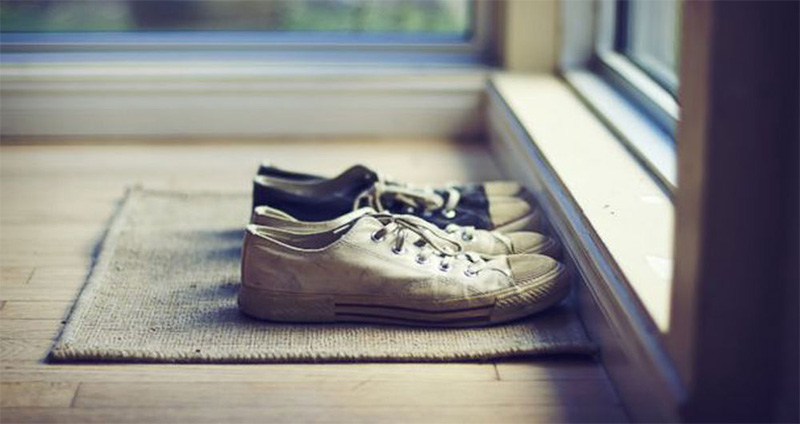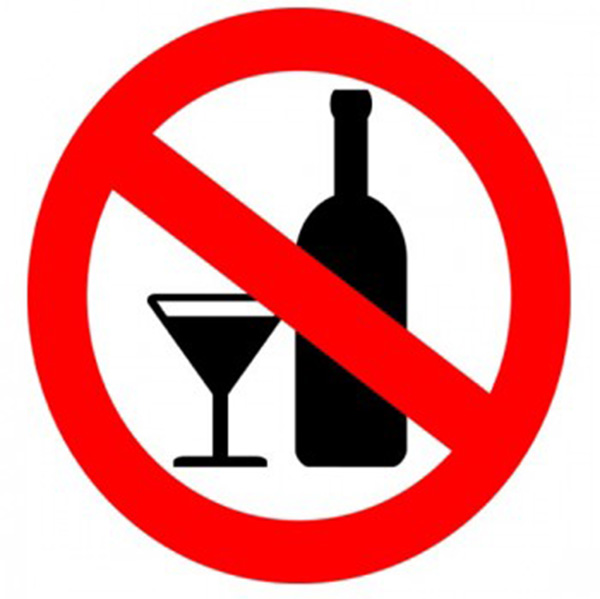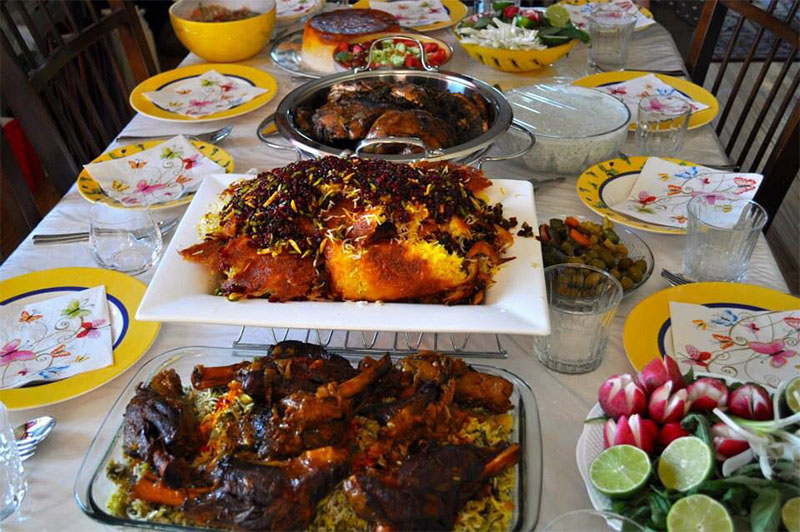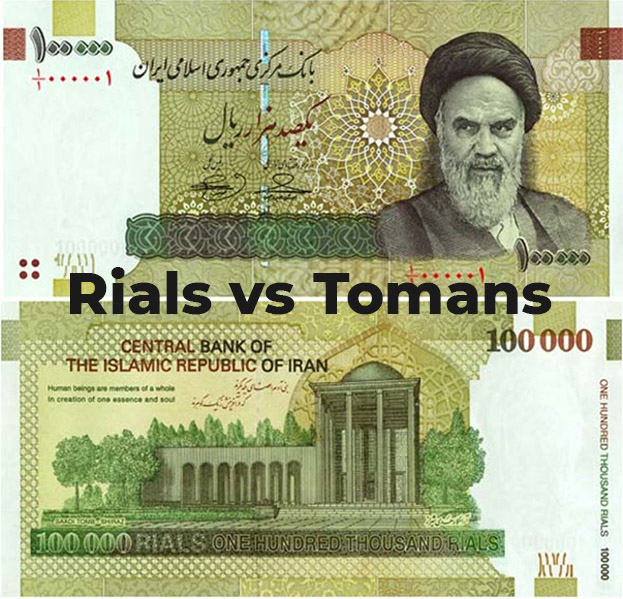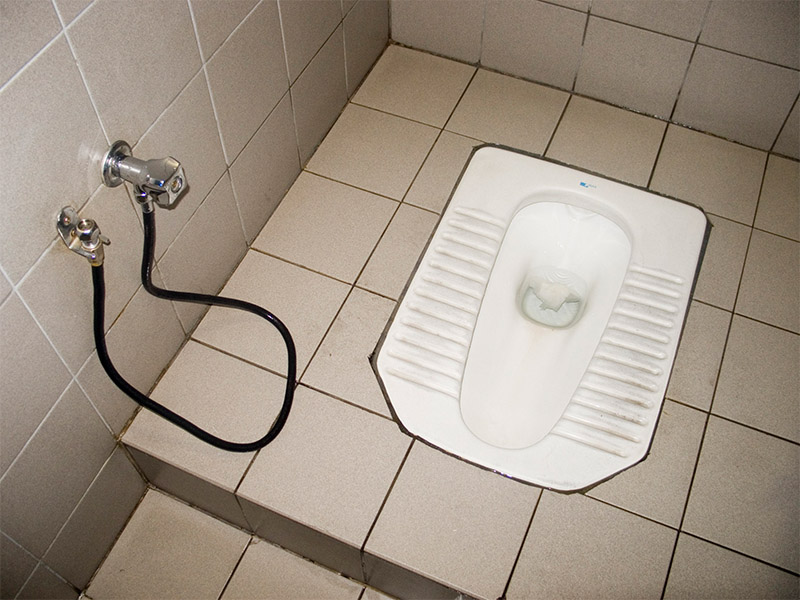Iran is a vast county with a unique culture and different ethnic groups. To have a better understanding of a country you’d like to visit, it is better to get acquainted with all the dos and don’ts of that country. In this article we have tried to offer you a relatively all-inclusive guide to the codes of conduct in Iran and provide you with all the tips you’d better know before travelling to this most surprising of countries.
1. Any Time Can Be The Best Time to Travel to Iran
Since Iran is a large country, there is no single best time to travel there as every season has its own beauty. But if you’re a fan of crowds and national celebrations, Nowruz (Persian New Year’s holidays, March 20/21 to April fools’ day) is strongly recommended for you. The south of Iran, with a rather hot climate, is a wonderful destination in winters and the northern and northwestern parts, being rather cold and wet, might be great in summers. Most of Iran’s travellers come in March, April, and May. October and November are also good times to enjoy the beauties of fall. Plus the touristic destinations are not as crowded as in April and May.
So a “suitable” time for coming to Iran, pretty much depends on your personal preferences. If you like being in crowds or with locals and experiencing religious ceremonies and you do not mind jammed religious rituals, “Muharram”, one of Muslims’ religious months which is associated primarily with mourning for the martyred Imam Hossein, might be a good month (especially on Tasua and Ashura, 9th and 10th of this month). You can check other important dates on the calendar as well. But if you prefer to travel to the quieter, less crowded places, we do recommend you to check the national and religious holidays before setting your time since some of the cities become very crowded on such occasions.
2. Visa
Considering the hard process for getting Visa, in 2016 the Visa on Arrival (VOA) made things easier. Citizens from 180 countries can apply for VOA for a one-month visa at the international airports of Tehran, Mashhad, Shiraz, Isfahan, Urmia, Bandar Abbas, Bushehr, Tabriz, Qeshm, Kerman, Kish, Ahvaz, and Larestan.
You can read more about Iran Visa and apply for it through IRANomad.
People from the following countries don’t need a Visa: Armenia, Azerbaijan, Bolivia, Georgia, Malaysia, Syria, Turkey, Venezuela. Things get a little bit complicated for people from Afghanistan, America, Bangladesh, Canada, Colombia, England, India, Iraq, Jordan, Nepal, Pakistan, Somalia and Sri Lanka. Travellers from these countries can’t get a Visa On Arrival and travellers from Canada, U.K., and U.S can only come to Iran with a tour accompanied by a tour guide everywhere. Citizens of Israel cannot enter Iran at all.
In the article “Directory of Visa Categories” by the Ministry of Foreign Affairs, you can read about different types of Visas.
3. No more Stamp on Your Passport!
Don’t worry about going to America and Israel with an Iran stamp on your passport anymore. The good news is that after entering the international airport, you can ask the authorities to stamp on a separate paper other than your passport. So no more worries about Iran’s stamp on your passport.
4. Airlines
Mahan and IranAir are two famous Iranian airlines which fly overseas. Some other airlines like Pegasus and Ukraine International Airline also fly to Iran with a stop mostly at Kyiv or Istanbul. The good news is that the flights do not land only in Tehran and you can start your journey in Iran from other international airports such as Isfahan, Shiraz, and Mashhad.
5. Buy a Local Sim Card
Do not forget to buy a local Sim Card with data at the airport. Hamrahe Aval and Irancell are the two famous telecommunication companies in Iran. They offer tourist Sim Cards at international airports. For tourist Sim Cards, you need to register with your passport. To recharge the Sim Card, you can either use Mah-Card to pay online or buy credit vouchers from mini-markets or newspaper kiosks and booths.
Almost every hotel and hostel has WiFi but for more comfort while out of those places, we do recommend having data. So you can check each place or word online and easily find the directions using Maps, etc. And we DO recommend you use data packages for the internet offered by Irancell and Hamrahe Aval, they are much cheaper than the usual services.
6. Download an Updated VPN
Some websites and social media platforms (like Telegram, Facebook, Twitter, and YouTube) are banned and you cannot access them unless you use a VPN (Virtual Private Network). There are different VPNs and time by time, the good ones change. Right now, some free ones to suggest are Unseen Online or psiphon3 for androids and SetupVPN as an extension for chrome for windows. There are also some paid VPNs that cost around $1 per month. Make sure to download the VPN before your arrival, because almost all the websites for downloading VPNs are banned in Iran as well.
7. Your Insurance MUST Cover Iran
Unfortunately, some of the well-known insurance companies do not cover Iran. So make sure that the insurance you buy covers Iran. Note that the insurance company must mention the Islamic Republic of Iran and general mentionings like Asia, etc. are not accepted and you must buy another insurance (which costs around $20). Some insurances do cover Iran but not all its provinces. Some provinces like Kurdistan and Sistan & Baluchestan may not be covered. Bear in mind that tourists almost go to these places and confront no problems but it is good to be aware of it or have full insurance just in case. So you can either buy it before your arrival or buy it from us.
By the way, if you are an adventure seeker who looks for cultural diversities to find and attend some trekking and hiking in off-the-beaten-paths (for example if you are lucky enough to attend Kooch Tour, beware that some basic plans of insurances do not cover trekking and hiking and you should buy higher plans.
8. Bring Cash or Order a Mah Card
Since no foreign credit card is accepted at ATMs in Iran, you should either bring all the cash you need or order a Mah Card.
If you choose to have cash with you, it is better to have USD; Euro and English Pond are also accepted. Be careful with the exchange rate, there are two exchange rates in Iran which have big differences. Iran Central Bank rate is the official rate but it is low. You can check updated official bank rates here. Open Market Rate is about 2 to 3 times more than the Iran Central Rate. You can check the updated rate on bonbast.com). If you sell your money to the exchange booth, you will get the equivalent open market rate. Remember that there are two banks at Imam Khomeini International Airport open 24/7 in Tehran to buy currency with the open market rate.
If you prefer not carrying loads of cash with you, there is another option. With a €20 fee you can order a Mah Card before your travel and they will deliver the card to your hotel or any address. They take your cash in a foreign currency and convert it to Rials and you can take Rials with Mah Card from any ATM in Iran. The good news is that there are no ATM fees for using Mah Card. But for online purchases, they rate a 7% commission.
IRANomad Tours has a discount for Mah Card and you can use this code for ordering a cheaper card:NOMADTOURS
:
NOMADTOURS
9. Don’t miss Traditional Guesthouses and Ecolodges

Kianpour Historical Residence in Isfahan
The recent trend in Iran tourism is staying at traditional houses where tourists can feel quite different. Houses in which you feel passed through time and get to an era in which everything was much simpler and kind of more authentic. The good thing about staying in old houses is preserving the local community and cultural diversity. If you are into experiencing local lives, these houses can be a good and easy-to-find option for you.
10. Don’t mistake Iranians for Arabs
Iranians are Iranians, not Arabs (with the exception of a truly small minority). There are so many people around the world that mistake Iranians for Arabs and assume that Iranians speak Arabic. It might be due to the similarity between the Persian and Arabic alphabets. But you must know that although Persian has Arabic letters, it is a whole other language. Indeed the two languages are from two different language families. While travelling to Iran, make sure you don’t make this mistake. Some Iranians might be pretty sensitive about these matters.
11. Weekends in Iran
Weekends in Iran are not Saturday and Sunday. The official weekend in Iran is Friday. Some of the offices are also closed on Tuesdays, while others are open until noon with the exception of some International companies like Europe that are off on Saturdays and Sundays.
12. Be Careful about Dress Codes
Dress Codes are pretty important in Iran. Women must wear Hijab in public which entails covering hair, hands, and legs. Women typically wear a scarf and long dresses or overcoats called Manteau. If you had a problem finding similar things in your country, no worries, you can find pretty ones with reasonable prices in Iran.
Men can wear short-sleeved shirts but must have long pants. Remember to consider the dress codes even on your arrival at the airport. But don’t be alarmed. Even if your outfit doesn’t match the dress code, you’re not gonna be arrested or insulted or anything. People understand that you’re a tourist and can even help you find suitable outfits if you ask them.
13. Women Must Wear Chador in Certain Places
Women must wear Chador for entering a few holy shrines and mosques. But you don’t necessarily need to buy Chador. There’s no need to do so unless you personally want to. Each mosque and holy shrine which asks women to wear Chador provide some Chadors for women who don’t have Chador themselves. So don’t worry about that.
14. Avoid Displaying Affection in Public
Since Iran is an officially islamic country, do not display affection to your significant other in public. Of course, shaking hands, holding hands and greeting or goodbye hugs and cheek kisses are not considered weird, but displaying more intimate affection in public is neither common nor recommended.
15. The tricky Hand-Shaking rule
Well, it might be a little bit confusing but there are different types of beliefs and attitudes among Iranians regarding hand-shakes. You can always shake hands with anyone of your same sex but shaking hands and any kind of touching with the opposite sex (except for specific family members) is banned among religious people and some local communities. So if you want to respect others beliefs, first find out their religious stand and then shake hands with them. A good tip would be for you to wait for the other person to initiate or check the other person’s body language and signals. If they open their arms for you or stretch out their hand toward you, you can safely hug them or shake their hand, even if they are of your opposite sex.
16. The Deal With The Thumbs up
Unlike other places, in Iran, thumbs up means something like showing the middle finger for some Iranians. Not all Iranians consider it rude and nowadays, most people, especially the younger generations, settlers of modern cities, and social media users are aware that in Europe and America, thumbs up means Ok; still, it is better to show your approval someway else (like with “the perfect gesture”).
17. No Shoes in Houses and Mosques
Iranians take off their shoes when entering houses and mosques as almost all houses and mosques are covered with clean rugs and carpets. So, it is better to be careful about where you are entering and take your shoes off when everybody else does the same. Only if the host tells you to enter with shoes on you are allowed to do so. By the way, you’d better have some pairs of socks with you if you prefer your feet to be covered in houses and mosques rather than walking around barefoot. It’s up to you.
18. Blowing your Nose
Blowing one’s nose in public is considered a little gross in Iran. So, if you have to blow your nose, it’s better to go to the bathroom or if there’s no opportunity for privacy, excuse yourself and do it a little slower. But if you’re sick and have a runny nose, you don’t need to excuse yourself every time you blow your nose slowly. People will understand.
19. Alcohol
Since the establishment of the Islamic Republic, alcohol has been illegal in Iran even though wine has a prominent role in ancient Persian culture. So alcohol won’t be served at hotels, restaurants, or cafes (and there are no bars in Iran. At least not legal ones). But due to the prohibition of alcohol, there are plenty of options in the black market. But we do warn you about that because there are so many fake alcohols like methanol and isopropanol that cause serious health problems. A safe option would be to drink the alcohol that some Iranian families make at home for personal use; though you probably won’t find many such families and you’d better not ask yourself until they offer you themselves.
20.Knives on Tables
Well, Iranians usually eat with a spoon and fork and using a knife is not that common except in luxury restaurants or while serving Steak. If you can’t get along with not having a knife at the table, just kindly ask for one.
21. The Common Hot Drink is Tea, NOT Coffee
You can find tea everywhere in Iran as refreshment. Persian tea is a must-try. We drink black tea (without milk), usually accompanied by some kind of sweet (sure cube, crystalized sugar, cookies, dried berry, etc). Our tea comes in different flavors like cinnamon, rose, mint, ginger, lemon, etc. And do not miss out on traditional herbal drinks called “Dam Noush” which mostly calm the temper and strengthen the immune system. You can, of course, find coffee at hotels, hostels, cafes, and many houses. But you cannot find good coffee everywhere. So if you are sensitive about having good coffee every day, we suggest you take some instant coffee powder from your home country. If you are not a fan of instant coffee, it is better to have your French press along with your coffee powder as well.
22. Being a Vegetarian in Iran?

Kuku Sabzi a delicious Persian food for Vegetrians
Iran might be quite famous for its Kebabs which may not seem so pleasant for vegetarians. Most Iranians are not vegetarians but if you are one, know that there are still good food options for you with eggplant, lentils, soy, etc. Do not miss trying Kashke Bademjan, Mirza Ghasemi, Adasi, Kuku Sabzi, and different types of vegetarian Ash and salads in Iran.
23. Rial or Toman? Which one Finally?
Rial is the official currency. But locals use Tomans for their calculations. 1 Toman is equivalent to 10 Rials. The current news is that Iran has officially announced Toman as the new currency and it has come into effect but the legal process and changing the bills take at least 2 years.
24. Iranians do not Hate any Nationality
There are so many political issues between Iran and some other countries that some nationalities like Americans think that Iranians may hate them. It may sound unbelievable but Iranians honestly do not hate any nationality and when it comes to tourists, they are so hospitable and friendly regardless of their nationality. Some of them might be critical of different governments but we assure you that Iranians are not as critical of others’ governments as they are of their own.
25. Asking for your Passport from the Hotel Receptionist is Common
If the reception asks for your passport, there is nothing to worry about it; they will give it back to you when you check out. It is better to have a copy of your passport in case you need it anywhere else.
26. Get Prepared for the Squat Toilet
An important tip you must know before travelling to Iran is that Iranians often use squat toilets. Most of the hotels and traditional guesthouses have a flush toilet and you can find it at some cafes and restaurants and even many modern houses, but public toilets have squat toilets. If you are too sensitive about this and can only use a flush toilet, you should probably check with the hotel you are going to, to see if they have a flush toilet or not. No worries, they mostly have.
Or, maybe it is time to give it a shot. It is not that difficult to use. Here is a guide for how to use a squat toilet. Bear in mind that you may not find toilet paper in every public place. Iranians wash themselves with water and if available, dry themselves with toilet paper. So if concerned, take some toilet paper with you. You can find toilet paper in every mini-market in cities.
27. Don’t Throw Toilet Paper in the Toilet
In Iran, you should always throw your toilet paper in the basket, not in the toilet. Since the sewage system in Iran is not designed to flush toilet paper, you must throw the paper in the basket.
28. Tap Water is Totally Safe
In Iran, Tap water is totally safe and people often drink from it. So you can easily fill your reusable bottle with tap water, and won’t need to buy water everywhere you go.
29. Be Careful when Crossing the Road
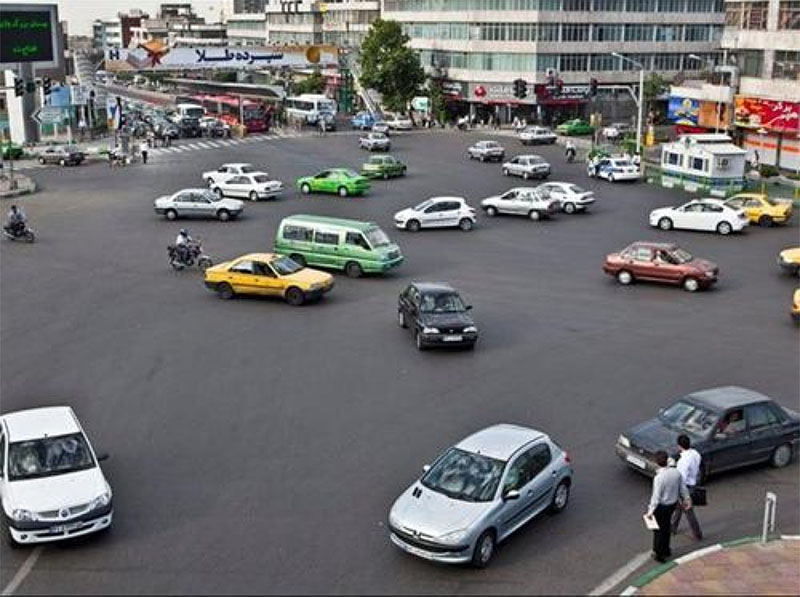
Tips for tourists – for crossing the road in Iran
Unfortunately, driving in Iran is not that safe. People love speed here and many of them multitask while driving. So it is better to be careful about it. Do not expect everybody obeys the rules and look around carefully when crossing the roads.
30. Transportations; Getting Around Iran
Public transportation is pretty common in Iran. Tehran and Mashhad have a metro and you can buy one-way or two-way tickets or a metro card. If you are going to travel a lot by metro, it is better to get a metro card and charge it once in a while; it is also a bit cheaper than the tickets. Each trip will cost you about 20000 Rials according to the distance. Besides, BRT (Bus Rapid Transit) is another option for your transportation in Tehran. You can use the metro cards for BRTs as well. And there are lots of taxis in the streets as well.
One unusual thing about taxis in Iran is that shared taxis are pretty popular and there are taxi stations in different parts of the city for taking a shared taxi. You can also get on a shared taxi in almost every place. Maybe the taxi driver asks you in Persian “Dar Bast?” which means “Do you want a private taxi?”. If you are in a hurry, you can say yes and get in the taxi. Be aware that other normal cars rather than signed yellow taxis also take passengers but it’s always safer to get in the signed, yellow taxis.
What we recommend is installing a ride-hailing application on your phone (Like Snapp or Tapsi) where you can choose your pick-up and drop-off destinations’ location and a nearby driver will accept your ride. Within a 2 to a maximum of 10 minutes, the driver is at your location to pick you up. Since you choose the destination before the ride, the driver will know how to get there through maps and you won’t be worrying about how to tell the driver where to go. It is much easier and also cheaper. There are a number of ride-hailing applications like Snapp and Tap30. But remember that you cannot use them in every city you go to. Snapp is available in 130 cities of Iran and Tap30 is available in some main cities.
Don’t forget to have the internet on your Sim Card to be able to use these applications anywhere. If you have an android, you can download Snapp and Tap30 via Play Store. But if you have an iPhone smartphone, you can not download it via App Store and you should download Snapp and Tap30 directly from the website (No worries, we have linked to Play Store and website).
31. Different Sections for Women and Men in Buses & “Women Only” sections in metros of Iran & Metros
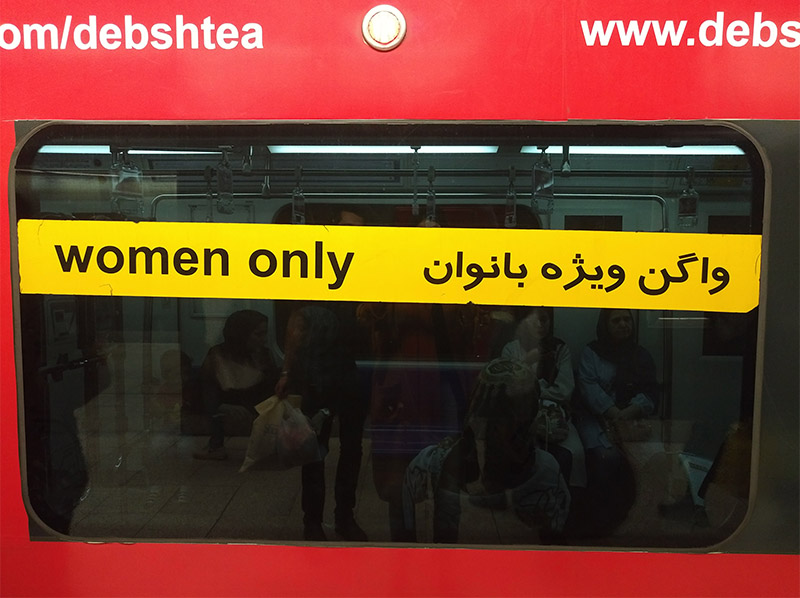
“Women Only” section in metros of Iran
Women section in BRT (-Bus Rapid Transit- long red ones) buses are in front. But in usual buses, women seat in the back and the first and last cabins of the metro are women-only. Remember that women can also enter the men’s sections in metros but if it is so crowded and you are an alone woman travelling, you might feel more comfortable in the women-only section.
32. Give VIP Busses a Try
Travelling between cities with buses is pretty common in Iran and is quite safer than cars. VIP buses are pretty comfortable and the price is reasonable too. In long distances, tourists go on a VIP bus at night to sleep the night in the bus and enjoy the day in the city.
33. Get Prepared for the Traffic
Traffic in Tehran and some other big cities is something common. You must prepare yourself and get used to it. You can also set timings for your transportations when there is less traffic. It is good to know that morning (7-10 a.m) is the school and work start time and in the afternoon (between 4 to 7 p.m.) is work and school end time. So it is when there’ll be the maximum traffic.
34. Have a Translation App on your Phone
The good news is that finding people who know English in Iran is pretty easy these days, especially in the metropolitan cities of Iran, but for sure having google translate or any translator app on your phone can be quite helpful just in case.
35. Get acquainted with Ta’arof Concept
There is this hospitality trait among Iranians which is basically the practice of excessive etiquettes in different situations or refusing being paid for their service. They may say that you can have something, say their product, for free or be their guest this one time. Remember that they may be so kind or even mean it sometimes but mostly they are just trying to be polite. A little bit confused? Well, you should be. But NO worries. In case they offer anything for free to you, try two or three times to insist on paying, hopefully, you get the chance to pay and pass the Ta’arof process but if they still insist on excluding you from paying, you might as well express your gratitude and take it for free (if it’s a small thing and doesn’t cost much) . For a better understanding, you can check this YouTube video:
36. Last but not least: IRAN IS SAFE
Despite all the biased media’ efforts to showcase Iran as an unsafe country, Iran is a relatively safe country. There are so many travellers coming each year to Iran, you can ask for their experience and see how they’ve felt in Iran. For having a more clear idea, you can watch Drew Binsky’s video:
Lonely Planet also puts Iran safety this way:
Iran is generally a very safe place to travel, so much so that many travellers describe it as the ‘safest country I’ve ever been to’, or ‘much safer than travelling in Europe’. Violent crime against foreigners is extremely rare and, indeed, if you do your best to fit in with local customs, you are unlikely to be treated with anything but courtesy and friendliness – that applies to Americans, too.
Dangers and Annoyances section in Lonely Planet
We at IRANomad Tours try our best to provide all necessary information for travelling to Iran. We would be happy to hear your ideas and experiences. If you have any questions in mind, please let us know.

